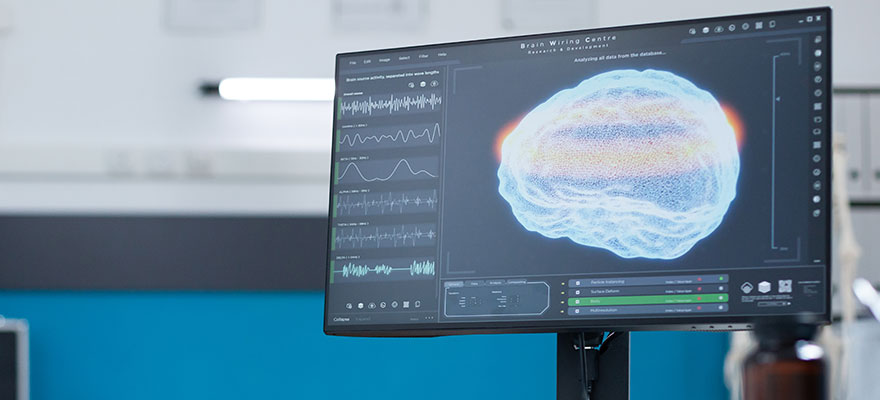Effectiveness of TPS therapy for Parkinson’s proven by study
New research results confirm: TPS as an effective treatment for Parkinson’s disease
Parkinson’s disease and the benefits of Transcranial Pulse Stimulation (TPS) are known to have been studied in clinical settings for years. I am therefore delighted that scientists at the renowned Medical University of Vienna have recently published a study on this topic for the first time, although large double-blind and placebo-controlled studies are still in progress and – just like in the pharmaceutical industry – will unfortunately take many years.
TPS – Exciting research progress in Parkinson’s
Transcranial Pulse Stimulation (TPS) stands out as an advanced, non-invasive brain stimulation procedure and has already gained considerable attention for its success in Alzheimer’s therapy. It is being studied intensively in global research to explore its potential for the treatment of other neurological diseases.
The application of TPS in Parkinson’s disease is also at the center of exciting research progress. Over the past twelve years, clinical observations have shown that this technology delivers promising results in the treatment of Parkinson’s disease. A further study by the Medical University of Vienna has recently confirmed that TPS can provide significant improvements in motor function as an additional treatment option for Parkinson’s patients. These results demonstrate the effectiveness of TPS in Parkinson’s treatment and confirm its safety, as it is associated with no clinically relevant side effects.
Another important aspect of this research work is the consideration of the placebo response, which is of central importance in the assessment of non-invasive brain stimulation methods in general. The study thus makes a significant contribution to a deeper understanding of TPS and its role in the modern treatment of neurodegenerative and neurophysiological diseases.
Evaluation of the safety and efficacy of Transcranial Pulse Stimulation in Parkinson’s
In a study conducted by the Medical University of Vienna, Transcranial Pulse Stimulation (TPS) was examined in detail in patients with Parkinson’s disease. The focus of this open, retrospective analysis was to assess the safety and practicability of TPS for a wide range of Parkinson’s patients as encountered in everyday clinical practice. In addition, the aim was to identify potential clinical effects based on changes in standardized rating scales.
A key criterion for the success of the study was the observation of changes in the Unified Parkinson’s Disease Rating Scale Part III (UPDRS-III), a scale that specifically targets the motor functions of Parkinson’s patients. By comparing UPDRS-III scores before and after TPS treatment, the researchers were able to draw direct conclusions about the effectiveness of TPS in improving motor symptoms. This approach provided a sound framework to assess not only the efficacy, but also the safety and feasibility of this treatment method in a real clinical setting.
Participant profile and methodology of TPS treatment in the Parkinson’s study
The Transcranial Pulse Stimulation in Parkinson’s study included 20 patients (15 men and 5 women, average age: 67.6 years, disease duration to date: 3 to 148 months) who had been diagnosed by external neurology specialists. This group of patients, representing a wide variety of Parkinson’s subtypes and comorbidities, underwent a treatment trial of ten TPS sessions over a two-week period. Conditions for participation included a formal request for treatment, patients’ clinical stability, an assessment of their motor function before and after therapy using the Unified Parkinson’s Disease Rating Scale Part III (UPDRS-III) by independent neurologists, and written informed consent to participate.
This heterogeneous sample reflects typical characteristics of patients in clinical practice and is crucial for evaluating the practical applicability and benefits of TPS. Prior to the start of TPS treatment, high-resolution MRI images were obtained for diagnostic clarification, assessment of brain structure and planning of TPS navigation. In addition, a functional neurological examination was performed to comprehensively assess the clinical condition of each patient.
The target areas for TPS stimulation were determined individually based on the MRI images and primarily included the sensorimotor cortex and other relevant motor regions. If necessary, additional areas, such as the left dorsolateral prefrontal cortex in the presence of depression, were included in the treatment.
Monitoring patient safety and reporting adverse events
Patients were carefully monitored for adverse events over the course of the two-week Transcranial Pulse Stimulation treatment. After each therapy session, they provided feedback on any discomfort, rating feelings of pressure and pain using visual analog scales (VAS; from 0 for ‘none’ to 10 for ‘very severe’ pressure/pain). 13 people reported very mild side effects such as brief fatigue and headaches, which subsided on their own within a day. The VAS results showed that most patients (91.5% with VAS 0) did not experience any unpleasant pressure sensations.
TPS in Parkinson’s disease: Clinical evaluation and results of the study
Patients were clinically assessed both four weeks before and after the TPS sessions, on average 14 days before the start of therapy and 13 days after completion. These assessments were performed by independent neurologists in the “ON” state of the patients, focusing on changes in motor skills using the Unified Parkinson’s Disease Rating Scale Part III (UPDRS-III). IBM SPSS Statistics (version 28) was used for the statistical analysis of the data obtained. The statistical analyses were performed with IBM SPSS Statistics (version 28), with a paired t-test showing significant effects at p < 0.05.
Significant motor improvements due to TPS treatment
The results of the study show a significant improvement in motor function in the participants as documented by the Unified Parkinson’s Disease Rating Scale Part III (UPDRS-III). Before treatment, the mean score was 16.70 (± 8.85), which dropped to 12.95 (± 8.55) after TPS therapy, which is highly statistically significant (p < 0.001). It is particularly noteworthy that seven patients improved by at least five points, while no deterioration was observed in any patient.
Consideration of the placebo effect in TPS therapy results
The significant results of the TPS treatment were not compared against a control group with sham treatment, which raises the question of possible placebo effects. It is well known in the literature on non-invasive brain stimulation techniques that placebo treatments may have neurobiological effects, such as stimulating dopamine release, which in turn is associated with improvement in Parkinson’s symptoms.
However, although non-pharmacological interventions generally tend to produce stronger placebo responses, the consistency and frequency of motor improvements (in 19 out of 20 patients) in the case of TPS clearly indicates that a pure placebo effect is unlikely. Previous studies of TPS that included sham controls and independent neurophysiological data (such as EEG and fMRI) also provide clear evidence of the modulating effect of TPS on neurophysiological processes and long-term neuroplastic and cognitive improvements, including in other areas such as Alzheimer’s dementia and depression. These findings, together with the current clinical data, underpin the potential of Transcranial Pulse Stimulation to establish itself as an innovative complementary form of therapy in neuromodulation.
TPS: Clear progress in the treatment of neurodegenerative diseases
Researchers recognize Transcranial Pulse Stimulation (TPS) as a significant innovation in the treatment of Parkinson’s disease. The data presented reaffirms the safety and efficacy of TPS and helps to better understand its applications in neurodegenerative diseases, including Parkinson’s, and to demonstrate its effectiveness.
Of course, to gain a deeper understanding of the long-term effects and overall effectiveness of TPS, further prospective studies with sham controls and larger numbers of participants are needed. However, the results of this retrospective study already provide convincing arguments for the use of Transcranial Pulse Stimulation as an innovative additional therapy for Parkinson’s disease.
The study was published in the renowned ‘Journal of Neurology’:</span
https://link.springer.com/article/10.1007/s00415-023-12114-1


